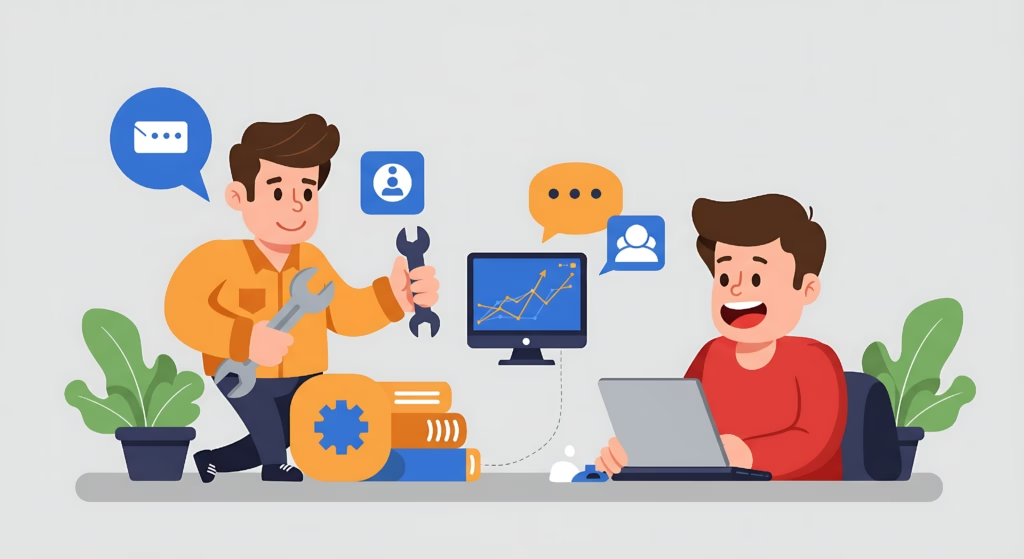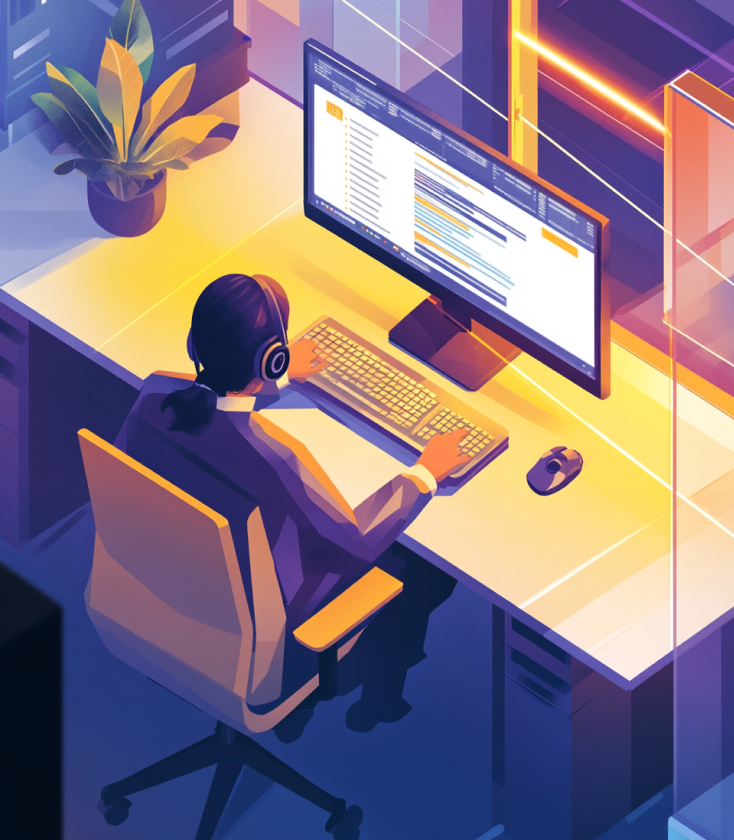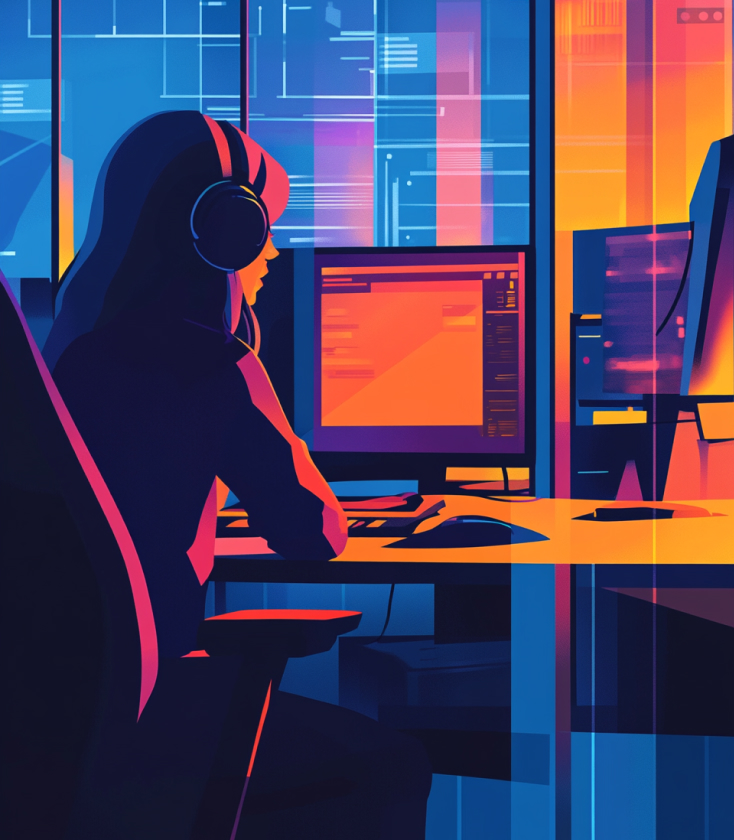What Is Callback Technology in CCaaS? (And Why AI Might Be Plotting Its Demise)
Picture this: You’re 23 minutes deep into hold music that sounds like it was recorded in a bathtub in 1998. Your coffee’s gone cold, you’ve memorized every synthetic violin note, and that robotic voice just reminded you—for the seventh time—that you’re “very important to us.” Spoiler alert: you’re not feeling very important.
Callback technology swoops in at this exact moment like a polite friend who offers to stand in line for you while you go grab lunch. In the world of contact centers and CCaaS (Contact Center as a Service), callback has become the unsung hero of customer experience—saving sanity, reducing abandon rates, and keeping satisfaction scores from plummeting into the danger zone. But here’s the twist: just as callback technology hit its stride, artificial intelligence showed up to the party with ideas of its own. Some might call it progress. Others might call it a hostile takeover.
Let’s unpack what callback technology actually is, why it matters, where it fails spectacularly, and how AI is quietly making it sweat.
What Is Callback Technology, Anyway?
Callback technology is deceptively simple: it lets customers hang up the phone without losing their spot in line. No more white-knuckling your phone while contemplating the meaning of existence between hold messages.
Here’s how it works. A customer calls a support line and enters a queue. The system detects that wait times are climbing—say, past 90 seconds or when the queue hits a certain size. Instead of subjecting the caller to more elevator jazz, the IVR (Interactive Voice Response) system chirps up with an option: “Press 1 to receive a callback without losing your place in line.”
Customer presses 1. The system captures their phone number (either from caller ID or by asking them to punch it in), stores it in a database with a timestamp, and releases the call. When it’s their turn—or within a specified timeframe—the system automatically dials them back and connects them to the next available agent. No hold music. No existential crises. Just a phone call when an actual human is ready to talk.
Behind the scenes, this involves intelligent queue management, database triggers, and automated call routing. Callback can be triggered based on average wait time, queue size, current service level, or abandon rate. Modern systems also support multi-channel triggers, meaning the callback offer might come through a web form, chat window, or SMS rather than just the phone IVR.
Basically, it’s queuing on behalf of the customer—which is shockingly polite for an industry whose greatest innovation up until now was making “please listen carefully as our menu options have changed” sound urgent every single time you call.
The Good: Why Callback Technology Actually Works
Callback technology delivers on three fronts: time, trust, and tone. And shockingly, it does this without requiring customers to sacrifice their firstborn or solve a CAPTCHA.
Time savings are the obvious win. Nobody enjoys waiting on hold. Callback returns time to the caller and smooths out the workload for agents. Instead of absorbing angry energy from customers who’ve been stewing for 15 minutes, agents get callers who are neutral or even pleasantly surprised. That tonal shift alone can save relationships—and possibly prevent some poor agent from requiring therapy.
Research backs this up. According to studies cited in the industry, 97% of contact center customers believe more centers should offer callback technology. That’s not a typo. Ninety-seven percent. When was the last time 97% of people agreed on anything? Meanwhile, 93% of agents reported that callback functionality made their jobs easier. Turns out, people actually like being treated like their time matters. Who knew?
Operational efficiency gets a serious boost too. Callback helps contact centers level out peaks in call volume. That lunchtime surge? The post-work avalanche? Callback smooths those out, distributing calls more evenly across the day. This means managers don’t have to hire extra staff just to cover a one-hour spike, and agents maintain a steady flow instead of alternating between frantic chaos and awkward silence.
Statistics improve across the board. Abandon rates drop because customers have a reason not to hang up in frustration. Service levels stabilize because callback can be triggered strategically—say, when you’re about to breach your SLA of answering 80% of calls in 20 seconds. Queue the callback option at 18 seconds, and suddenly you’re a genius.
Even the perception of fairness changes. Customers who choose a callback feel a sense of control. They’re not trapped. They’re empowered. That psychological shift translates directly into higher satisfaction scores, better Net Promoter Scores, and fewer rage-filled social media posts about your company.
The numbers don’t lie. Contact centers using callback technology report smoother operations, happier customers, and agents who don’t look like they’re contemplating career changes every 30 minutes. The technology essentially removes friction from one of the most universally despised aspects of customer service—the endless wait.
Of course, it’s not all sunshine and strategic queue management. Because if there’s one thing contact centers excel at, it’s finding creative ways to mess up perfectly good solutions.
The Bad: Where Callback Technology Falls Apart
Callback technology is only as good as its configuration. And unfortunately, poorly configured callback systems can transform from helpful to infuriating faster than you can say “Press 1 for more options.”
Poor configuration tops the list of failures. If your system doesn’t actually hold the customer’s place in queue—or if it calls them back during lunch, in a meeting, or at 3 a.m. because someone forgot about time zones—you’ve just replaced one frustration with another. Customers who opt for a callback expecting relief, only to get called at wildly inconvenient times, will remember. And not fondly.
Then there’s the band-aid problem. Some organizations deploy callback technology instead of addressing the real issue: chronic understaffing, terrible forecasting, or broken workflows. Callback can smooth the queue, but it can’t fix a fundamentally dysfunctional operation. Using it to mask deeper problems is like putting a fresh coat of paint on a house with a crumbling foundation. It looks better temporarily, but eventually, everything collapses anyway.
Integration complexity is another landmine. Callback requires seamless data synchronization between your CCaaS platform, CRM, and workforce management tools. Without that, you end up with mismatched data, duplicate calls, or—worse—callbacks that route to agents who have zero context about why they’re calling. Nothing says “we value you” quite like an agent asking, “So… why are you calling?” on a callback the customer specifically requested.
IVR messaging can make or break the experience. If your message promises a callback “in approximately 10 minutes” and the actual callback happens in 30, you’ve just destroyed trust. Customers need accurate expectations. Vague promises like “we’ll call you back soon” create anxiety, not reassurance. And if the IVR message is unclear about whether the callback holds their place in queue or schedules them for later, confusion reigns.
Statistics get messy too. Measuring callback effectiveness isn’t straightforward. Calls offered to the contact center might decrease (fewer repeat callers), but calls offered to agent groups might increase (more even distribution). Queue times could appear longer because the callback system never abandons calls. Abandon rates depend on whether “routed out” calls are classified as abandoned or not. Without careful tracking, you might think callback is failing when it’s actually working—or vice versa.
Overuse is the final trap. Offering callback on every minor queue—like internal IT helpdesks for simple password resets—adds unnecessary complexity. Sometimes it’s genuinely faster to just take the call. Not every situation needs a sophisticated callback workflow. But once organizations invest in the technology, they tend to deploy it everywhere, whether it makes sense or not.
Callback technology works brilliantly when implemented thoughtfully. But slap it on carelessly, and you’ve just created a new category of customer complaints. Congratulations.
When and How to Actually Use Callback Technology
Knowing when to deploy callback separates the strategic from the desperate. If your average hold time regularly exceeds 90 seconds, or if your call abandon rate creeps above 5%, callback isn’t optional—it’s necessary. But throwing money at technology without a plan is how contact centers end up with expensive systems that nobody uses correctly.
Start with data. Pull your CCaaS analytics and identify peak hours, queue durations, and drop-off points. Callback should trigger where it creates the most impact—not everywhere indiscriminately. High abandon rates during lunch? Configure callback to kick in then. Staffing shortages on night shifts? Callback smooths that out too.
Pilot before scaling. Roll out callback on one queue first. Analyze completion rates, callback success ratios, and customer feedback. Optimize the process based on real-world results, then expand. Skipping the pilot phase is how you end up with enterprise-wide disasters instead of localized learning experiences.
Integration matters intensely. Tie callback into your CRM and agent desktop so agents see full context when the call connects. They should know who they’re calling, why, and what the customer’s history looks like. A callback that routes to an unprepared agent wastes everyone’s time.
Communication clarity is non-negotiable. Your IVR prompt must set accurate expectations. “We’ll call you back in approximately 10 minutes” is a promise. If you can’t keep it, don’t make it. Customers forgive wait times. They don’t forgive lies.
Deployment options vary. Contact centers can purchase hosted services (quick setup, minimal capital investment, usage-based pricing), buy on-site systems (higher upfront cost, no usage fees, requires maintenance), or configure bespoke solutions using existing IVR and dialer investments. Each has trade-offs.
Hosted services work well for rapid deployment or space-constrained environments. On-site systems make sense for high-volume operations with capital budgets and technical expertise. Bespoke solutions leverage existing investments but require development skills—and mistakes here can be costly.
Enter AI: The Callback Disruptor
Callback technology used to be the gold standard for managing customer patience. Then AI showed up with a better idea: skip the callback entirely by solving the problem immediately.
Modern CCaaS platforms increasingly blend callback with AI self-service—natural-language IVRs, virtual agents, and intelligent chatbots. Instead of requesting a callback, customers resolve issues instantly. Password reset? AI handles it in 10 seconds. Billing question? The AI reads and explains the invoice without human intervention.
According to Gartner, by 2027, chatbots and virtual agents will handle 25% of customer interactions—up from 2% in 2022. Callback still has value, but AI is systematically absorbing the low-hanging fruit that once filled those queues.
So will AI replace callback completely? Not quite. They serve different purposes. AI excels at instant resolution for clear, structured questions. Callback provides human reassurance for complex or high-stakes issues. The future contact center blends both: AI deflects routine calls, callback offers a safety net for unresolved issues, and human agents handle what requires empathy, judgment, and nuance.
Callback isn’t dead. It’s just learning to share the stage with robots who—let’s be honest—don’t need coffee breaks or therapy sessions.
How Techmode Gets Callback Right
Callback technology is easy to underestimate until you see the difference it makes in customer satisfaction scores and agent morale. At Techmode, callback and AI workflows are designed as part of a holistic UCaaS and contact center ecosystem—aligning architecture, analytics, and automation under one unified strategy.
With TechmodeGO’s Contact Center Solutions, callback logic integrates seamlessly with call routing, agent availability, and reporting tools from day one. The company’s Premier Launch guided onboarding ensures every integration is airtight before it touches live customer interactions, avoiding the configuration disasters that plague poorly planned deployments. And with Techmode’s Concierge Services, businesses get ongoing U.S.-based support from technicians who actually understand the system—not offshore call centers reading scripts.
Because when “we’ll call you back” sounds like a promise instead of a threat, everyone wins.
FAQ: Callback Technology in Call Centers
Q: How does callback technology actually work?
A: When wait times exceed a threshold, the IVR offers customers a callback option. The system captures their phone number, holds their queue position, and automatically dials them when an agent becomes available—eliminating hold time entirely.
Q: What are the main benefits of using callback technology?
A: Callback reduces customer frustration, lowers abandon rates, improves service levels, and helps balance call volume peaks. Research shows 97% of customers want more centers to offer it, and 93% of agents find it makes their jobs easier.
Q: When should a contact center implement callback technology?
A: If your average hold time regularly exceeds 90 seconds, your abandon rate is above 5%, or you struggle with staffing during peak times, callback is necessary. It’s also valuable for new businesses that can’t afford to lose a single call.
Q: What are common mistakes with callback implementations?
A: Poor configuration (calling at inconvenient times), using it to mask understaffing problems, unclear IVR messaging, integration failures that leave agents without context, and overusing callback for minor queues where it adds unnecessary complexity.
Q: Is AI making callback technology obsolete?
A: Not entirely. AI handles simple, structured questions instantly, reducing callback volume for routine issues. However, callback remains essential for complex problems requiring human empathy and judgment. The best strategy blends both: AI deflects simple calls, callback manages overflow, and humans handle nuanced situations.
If you’d like to explore how Techmode’s callback and AI-driven CCaaS platforms can transform your contact center, visit Techmode’s Contact Center Solutions or learn how to become a TechmodeGo Partner.









